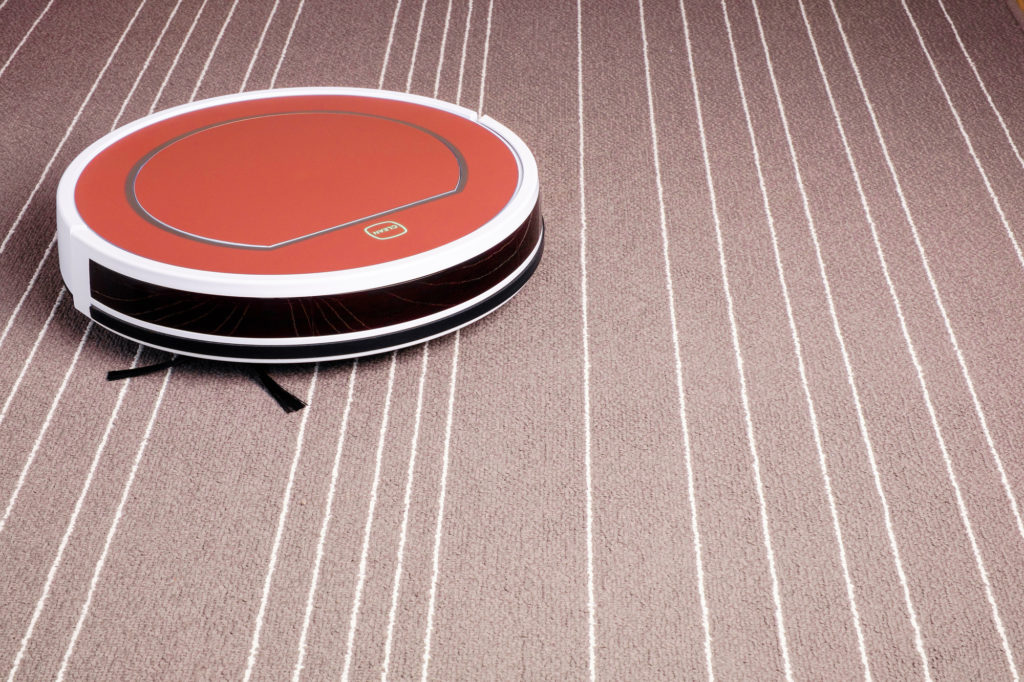The undisputed king of the robot cleaners is the Roomba vacuum. But how does a Roomba actually work? We take a closer look.
The average American spends 3 hours and 9 minutes on household chores every day. At least part of those activities includes vacuuming. This has translated to over $4,000 million in revenue for vacuum cleaner companies in 2018.
If you live in a house, chances are you own a vacuum cleaner. And you’re not crazy about vacuuming all the time.
If you like a clean home, but you don’t have time to vacuum, why not try the king of robot cleaners, the Roomba vacuum?
Have you always wondered how a Roomba vacuum works? Wonder no more! Keep reading for a closer look at this amazing hands-free vacuum cleaner.
The Agitator
The agitator consists of two rotating brushes on the underside of the vacuum. Each brush spins in the opposite direction as its counterpart. The brushes grab the dirt and debris.
The dirt from the brushes is deposited into the dirt bin.
Side Brushes
On one side of the Roomba is a spinning brush that reaches beyond the vacuum shell. It touches the walls and kicks dirt free and into the vacuum’s reach. A brush on the other side of the vacuum redirects other underneath the unit.
The Vacuum
The vacuum is the suction that pulls the dust and debris from the agitator and side brushes into the dirt bin. The vacuum sucks dirt on a continuous basis while the machine is on.
The Roomba’s suction power is comparable to regular upright vacuum cleaners. This gives the robot vacuum strong cleaning power.
The Dirt Bin
The Roomba vacuum doesn’t use vacuum bags. No more running to the store when you run out of bags! It’s also one less expense. There is a filter that needs replacing now and then when it’s clogged.
Empty the dirt bin after each room and more than once if the room is dirtier than average.
Onboard Sensor Mechanism
Roomba is a robot with onboard sensors. The sensors keep it from tumbling down the stairs and running into furniture.
On the top front of the Roomba is an infrared beam. The beam senses obstacles and walls and slows the vacuum down when it gets too close. When the vacuum hits something, a plastic sensor in the front bumper stops the Roomba.
The infrared sensors under the vacuum point straight down. This keeps the Roomba from falling down stairs or other steep drops.
The Roomba also senses cables and curtain tassels. It shuts down the rotating brushes if it senses possible entanglement.
Another interesting sensor is the piezoelectric sensor. This is a crystal that when struck generates electrical impulses. When dirt hits the sensor creating electrical impulses, the vacuum knows there’s more dirt in the area.
This causes the Roomba to do another round of cleaning. On the second round, it goes slower and does a more thorough job.
Older models like the 560 moved randomly through the rooms in your home. Newer versions use Vision Simultaneous Localization and Mapping (VSLAM). This uses infrared cameras.
The vacuum takes pictures of the rooms. Over time, it learns where it has been. This enables the newer vacuums to clean faster and better. They move in straighter lines like a human.
There are price differences in the newer models. The Roomba 960 vs Roomba 980 is about a $200 dollar price difference. Whether to spend the extra money is dependent upon the type of home and amount of dirt you have.
The Roomba 980 has a more powerful motor with better suction. If your home is large and you have pets, go with a more powerful vacuum.
Wireless Capability
The newest Roombas are Wi-Fi connected. This is convenient if you’re away from home a lot. Program the vacuum from your tablet or smartphone. The Roomba vacuum means you no longer even have to be home to vacuum!
Do You Hate Cleaning Under Things?
If you’ve ever hit your head cleaning under the dining room table or bed, you’ll appreciate the Roomba vacuum. This powerful little robot does a great job of cleaning underneath things.
Tired of moving all the chairs away from the dining room table when vacuuming? The little Roomba robot makes its way around the chairs by itself.
Advantages
You don’t spend precious time vacuuming yourself. Charge the Roomba, press the “Clean” button, and it cleans on its own.
The Roomba is great for older people who don’t like carrying a heavy vacuum around the house or up the stairs. The robot takes its time and does a more thorough vacuuming job than most people.
Roomba reduces allergens through its use of double HEPA filters. Regular vacuuming is one way to keep allergens at bay. Because the Roomba allows you to vacuum when you’re not even home, it’s a great help for allergy sufferers.
Drawbacks
There are pros and cons to every type of vacuum cleaner. The Roomba is no different. Although the Roomba cleans under things well, it can’t move furniture to get behind things.
The Roomba also can’t clean stairs.
The dirt bin is somewhat small, though newer models have bigger capacity. You’ll spend time cleaning the bin and filters. If you have a pet or two, clogged bristles are a problem. You’ll have to clean those as well.
The vacuum doesn’t sense fluids, so if there’s a spill, it rolls right through it. If the wet mess happens to come from your animal, it’ll spread it around the house.
Although the Roomba should stop itself from getting caught in your cords, it doesn’t always work. Make sure that wires, gadgets, and clutter are off the floor when the Roomba vacuums.
The Convenience of the Roomba Vacuum
If you’re a gadget person who doesn’t like vacuuming, the Roomba vacuum is a great option for you! The Roomba is hands-free. It does the cleaning, leaving you free to do other things.
It’s double HEPA filters ensure cleaner air. And there’s no more spending money on vacuum bags. Even your kids will enjoy watching the Roomba do its cleaning! The Roomba vacuum makes cleaning less tedious and more enjoyable.
Find more interesting and informative technology articles here.










